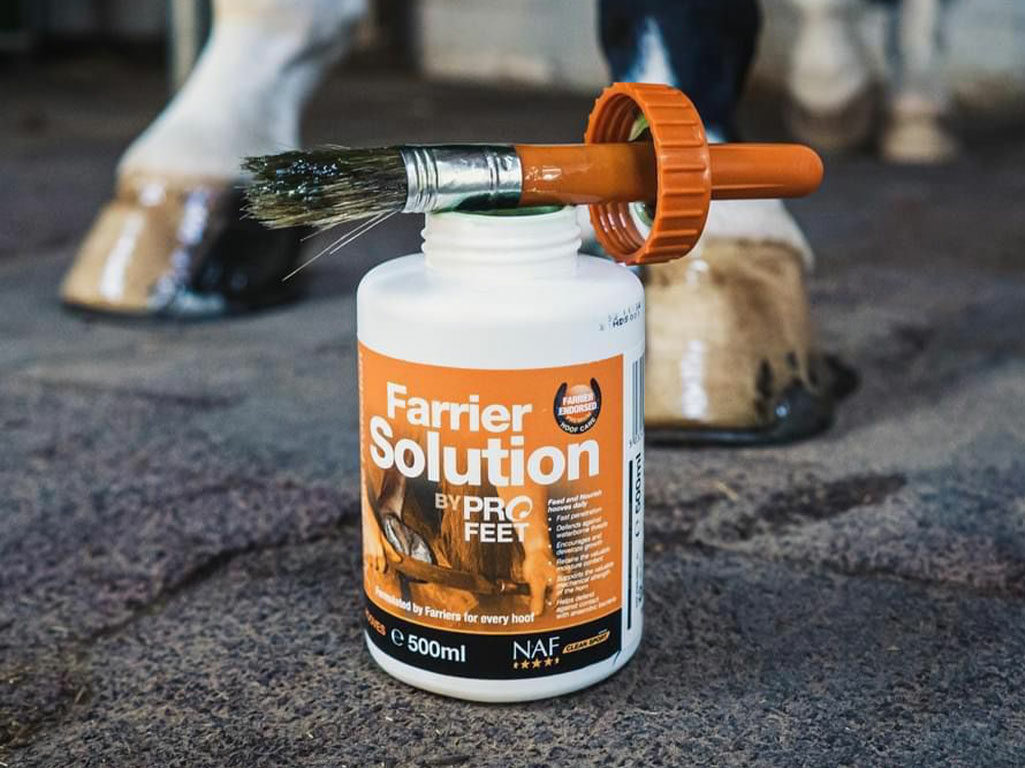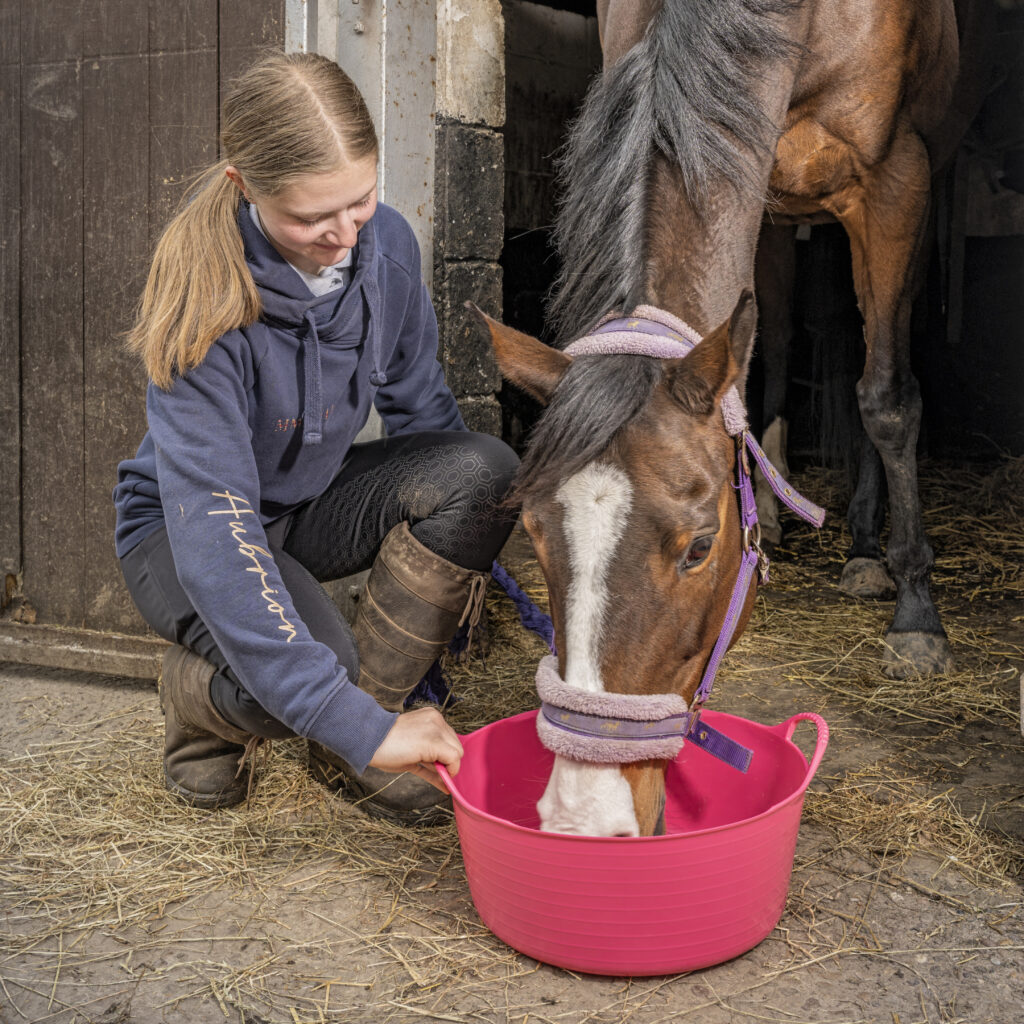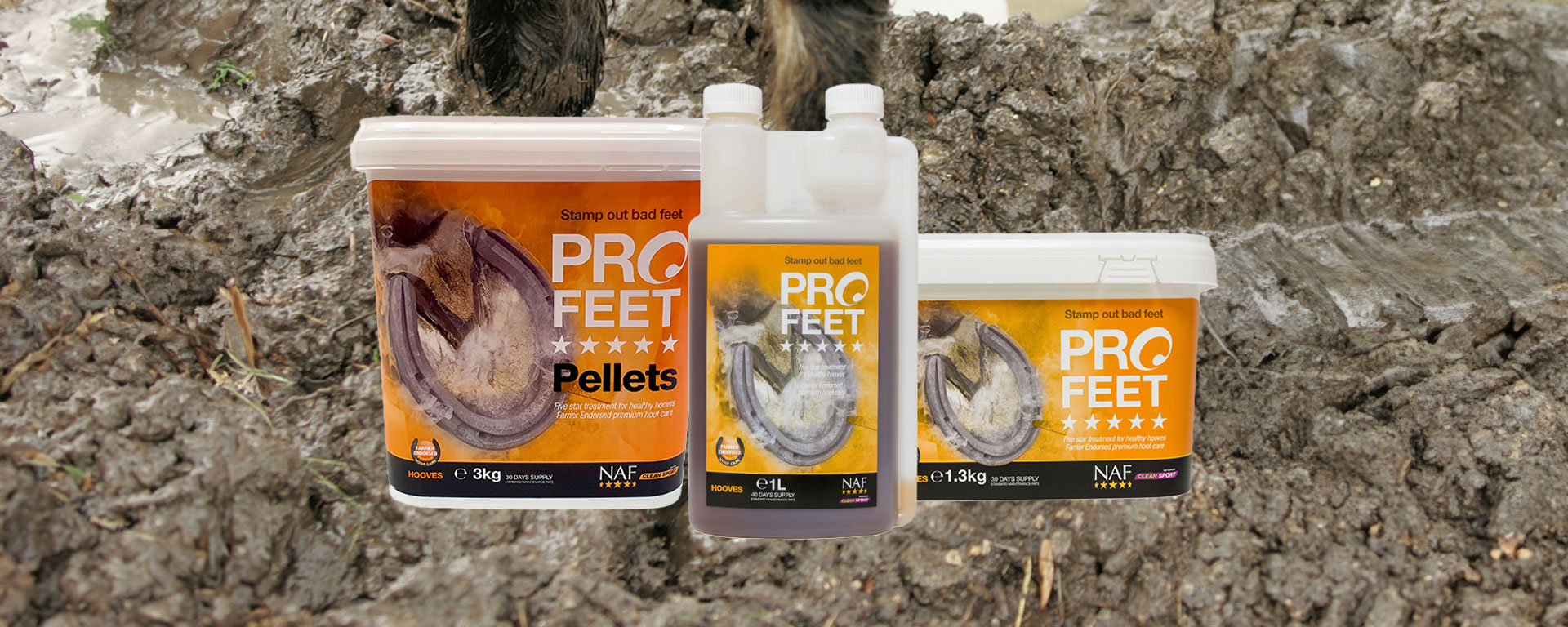The following has been written by Kate Hore. RNutr(Animal), R.Anim.Technol (Cert). Head Nutritionist at NAF
As we come out of a summer and autumn that often seemed more ‘wet, wet, wet’ than it did long, hot and sunny, as horse owners we’re facing bigger than ever challenges in surviving the wet and muddy conditions of winter. Perhaps not surprisingly the area of horse health most often affected by muddy conditions are their hooves – after all, the hooves are the part of the horse that have to stand in, and work in, whatever ground conditions the horse is exposed to.
The risks of exposure to mud are well-known on the soft tissue of the heels, legs and further up; but how often do we consider the issues of mud expose to the hooves themselves? It goes without saying that mud is, by its nature, wet – and prolonged exposure to wet conditions soften the hoof wall and sole, leading to compromised hoof health. Research in flooded areas shows multiple issues of the wall and sole, including complete sloughing of the frogs, from long-term exposure to wet conditions. Whilst flooding is an extreme condition, it is on the increase, and it demonstrates the risks from any wet, muddy fields. Be aware of the signs to look for:
- A strong, unpleasant, smell
- Hoof discharge
- Cracks
- Colour changes around the white line
- Changes of hoof capsule shape
- Soles which look powdery or cracked
- Changes to the frog
- Soundness issues
Management for Winter Hooves
As horse owners there are simple steps we can take to help protect our horses hooves through winter, whatever the weather. Long-term exposure to mud should be avoided. Try to provide a clean, dry standing area such as a yard or in a school to give hooves some respite. Consider providing hard standing or field mats around gates and troughs. If possible, regularly move the hay or haylage provision in the field to avoid cutting up that area.
As much as we don’t want constant exposure to wet, we must also be aware to avoid a regular wet-dry cycle. Hooves expand with water and shrink when dried, and if that cycle is regularly repeated it causes wall cracking. Some moisture is necessary for keratin strength, but works optimally when it is maintained as an even level of moisture. This can be difficult if the horse is stabled on dry bedding or regularly working in sand schools, before heading back out into the wet.
Daily application of NAF PROFEET Farrier Solution is recommended, both across the wall and over the sole. PROFEET Farrier Solution is rich in fatty acids which supports the natural phospholipids of the hoof. Phospholipids in turn can both attract and repel water, helping maintain the correct moisture balance whether standing in wet or dry.

Nutrition for Winter Hooves
Whilst hoof growth is year round, growth rate does slow as the weather cools. This can make defending against winter hoof conditions even harder as we try to replace cracked or compromised hoof wall that is not growing out quickly. NAF Five Star PROFEET supplement nourishes from the inside out, with a targeted blend of hoof support nutrients including optimal levels of biotin, zinc, vitamins, amino acids and botanicals for hoof health. PROFEET is available in powder, pellet or liquid, to suit you and your horse. Remember hooves are slow growing, so it is advised to feed daily on a maintenance basis.

Care for Winter Hooves
- Provide a dry standing area
- Inspect and pick out hooves daily
- Maintain regular farrier visits
- Apply NAF PROFEET Farrier Solution daily
- Feed NAF PROFEET for nutritional support of healthy growth
NAF Five Star PROFEET Farrier Solution and Supplement work synergistically, supporting external hoof defences and nourishing internal hoof integrity, whatever the weather.
Reference: McConnico R.S. 2007. Flood injury in horses. Vet. Clinics of North America: Equine Practice. 23(1) p.1-17






